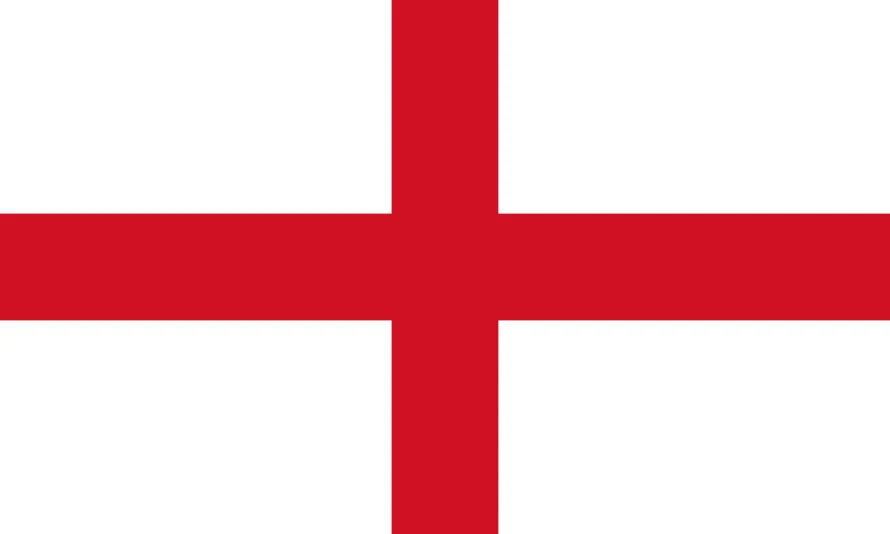The Flag of England and the Cross of St. George
The flag of England is a simple yet powerful design: a red cross on a white background. This is known as the Cross of St. George, and it has represented England for centuries. But where does it come from, and what does it mean? Let’s explore the history and symbolism of this iconic flag.
Who Was St. George?
St. George was a Roman soldier who lived during the 3rd century. He is best known for his legendary bravery and for refusing to give up his Christian faith, which led to his execution. Over time, stories of St. George became more symbolic—most famously the legend of St. George and the Dragon, where he slays a dragon to save a town.
Because of his courage and commitment to his beliefs, St. George became a popular figure in Christian tradition. He was named the patron saint of England in the 14th century, during the reign of King Edward III.
The Cross of St. George
The red cross on a white background became associated with St. George during the Crusades (from the 11th to 13th centuries), when European soldiers wore crosses to show they were fighting for Christianity. English knights often used the red cross to identify themselves.
Eventually, the cross became a symbol of England itself. It was officially used as England’s national flag by the late Middle Ages and remains in use today.
The England Flag vs. the UK Flag
It’s important to note that the England flag (the Cross of St. George) is different from the Union Jack, which is the national flag of the United Kingdom. The Union Jack combines the flags of England, Scotland, and Ireland, representing the full union of the UK.
-
England: Red cross on white (St. George)
-
Scotland: White diagonal cross on blue (St. Andrew)
-
Ireland (Northern): Red diagonal cross on white (St. Patrick)
These three were combined to form the Union Jack in the early 17th century.
When Is the Flag Used?
The Cross of St. George is commonly flown:
-
On St. George’s Day (April 23), a celebration of England’s patron saint
-
During sporting events, especially when the England national football or rugby teams are playing
-
At official events or public celebrations involving English heritage
A Symbol of National Identity
Today, the flag continues to be a source of national pride and cultural heritage. It represents England’s history and its modern identity, and it is often displayed to show support for national events and traditions.
In Summary
The flag of England, featuring the Cross of St. George, is a national symbol with deep historical roots. From medieval battlefields to modern-day celebrations, it continues to play a meaningful role in how people see and celebrate English identity.
Get your England Flag Phone Case HERE
